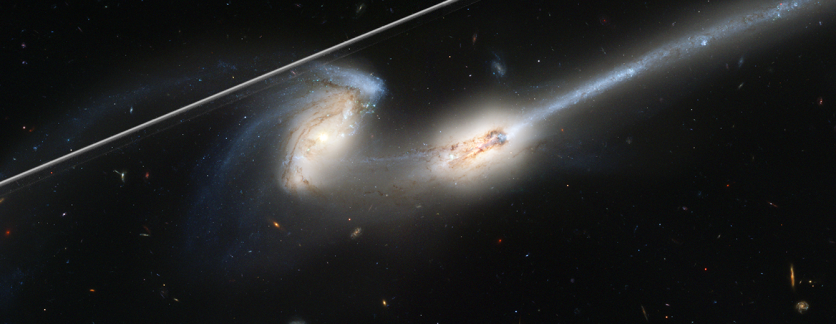The NASA Hubble Space Telescope has stayed in low-Earth orbit for quite some time now, and this has greatly affected the shots it took of space, as LEO satellites have been significant obstructions in the images. However, a newly developed tool from researchers is doing its part to clear up these images by the Hubble, saving the day.
Satellites are massive photobombs, and the abundance of low-Earth orbit satellites has become a problem that blocks images and possible escape to space.
Hubble Photobombs No More: New Tool Aims to Remove Satellites

In a recent press release by Baltimore's Space Telescope Science Institute (STScI), a new tool developed by researchers is here to make Hubble's shots clear and rid of obstructions. These so-called "photobombers" have appeared in some of the images provided by Hubble in some of the research in outer space, hereby rendering it unclear for some.
This cannot be avoided as the Hubble is now staying in low-Earth orbit, and it is widely known that many satellite constellations are already locked onto their place nearby the planet's atmosphere.
Its new tool aims to help improve images and capture what the astronomers intended to see with the Hubble, considering these obstructions as equivalent to "scratch marks" on space photos.
Hubble's Operations are Centered on the Low-Earth Orbit
"We developed a new tool to identify satellite trails that is an improvement over the previous satellite software because it is much more sensitive. So we think it will be better for identifying and removing satellite trails in Hubble images," said Dave Stark of STScI.
The "Radon Transform" technology is applied to this tool which helps remove the streaks or other forms of obstruction done by the Earth-orbiting satellites, applied to Hubble's Advanced Camera for Surveys (ACS), also known for its wide shots.
LEO Satellites and their Space Effect
Satellites have grown at a rapid rate in the low-Earth orbit in the past years, and this is because the trip to space and delivering payloads has gone a lot cheaper than before, thanks to private space companies. One of the leading satellite fleets in the LEO is SpaceX's Starlink, particularly with its satellite internet services that widened connections.
There is even an initiative from the China Aerospace Science and Technology Corporation (CASC) to bring a "Megaconstellation" that will challenge what SpaceX has in orbit. More satellites are coming to fill up the low-Earth orbit, and over time, this may block out the planet, particularly those that are rendered not-in-service anymore.
Experts and astronomers are getting alarmed by the growing rate of satellites on the LEO, and while this help significantly improve life on the planet, these have more effects that are yet unknown. The Hubble's new tool to remove the photobombs may help digitally alter their appearance on images, but the physical satellites are still there, filling up in orbit.
Related Article : NASA's Hubble Space Telescope Spots Rare Black Hole Close to Earth

ⓒ 2025 TECHTIMES.com All rights reserved. Do not reproduce without permission.




